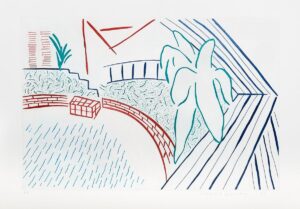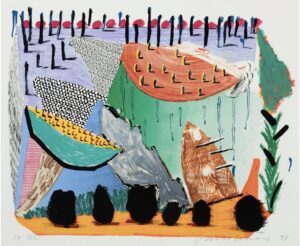Tree, 1968
From an edition of 95 + 22AP
Signed and dated in pencil, published by Petersburg Press, London, framed.
25 3/5 × 19 7/10 inches (65 × 50 cm.)
To create a similar listing log in or sign up.
Log in/sign upAll works are inspected prior to delivery, work will be sent out tracked and insured at buyers cost. If you'd like to make specific arrangements or discuss collection then please contact us directly.
Accepted: Wire transfer
ART PLEASE Assurance Policy: Every ART PLEASE seller has been approved by ART PLEASE after a thorough review. All of our sellers are required to accept the following ART PLEASE policy: A buyer may return an item purchased through ART PLEASE, if the item received is not as described in its listing, or is found to be unauthentic.
David Hockney's print titled "Trees" from 1968 is a vibrant and captivating work that showcases the artist's unique approach to depicting nature. The print features a dense forest scene with tall, slender trees standing proudly against a vividly colored background. Hockney's use of bold, contrasting colors creates a sense of energy and dynamism within the composition. The trees themselves are rendered with simplified, almost geometric shapes, lending the print a sense of abstraction and modernity. Hockney's mastery of color and form allows him to convey the essence of the forest while still infusing the work with his distinctive artistic style.
One striking aspect of Hockney's "Trees" is his deliberate choice to eschew traditional notions of perspective. Instead of depicting the trees in a realistic manner, he flattens the space, presenting them as a series of overlapping forms. This unconventional approach adds a sense of depth and complexity to the composition, challenging the viewer's perception and inviting them to explore the print further. The vibrant colors and simplified shapes also imbue the artwork with a sense of joy and optimism, reflecting Hockney's fascination with nature and his desire to capture its essence in his art. Overall, "Trees" is a testament to Hockney's innovative vision and his ability to transform the ordinary into something extraordinary.







